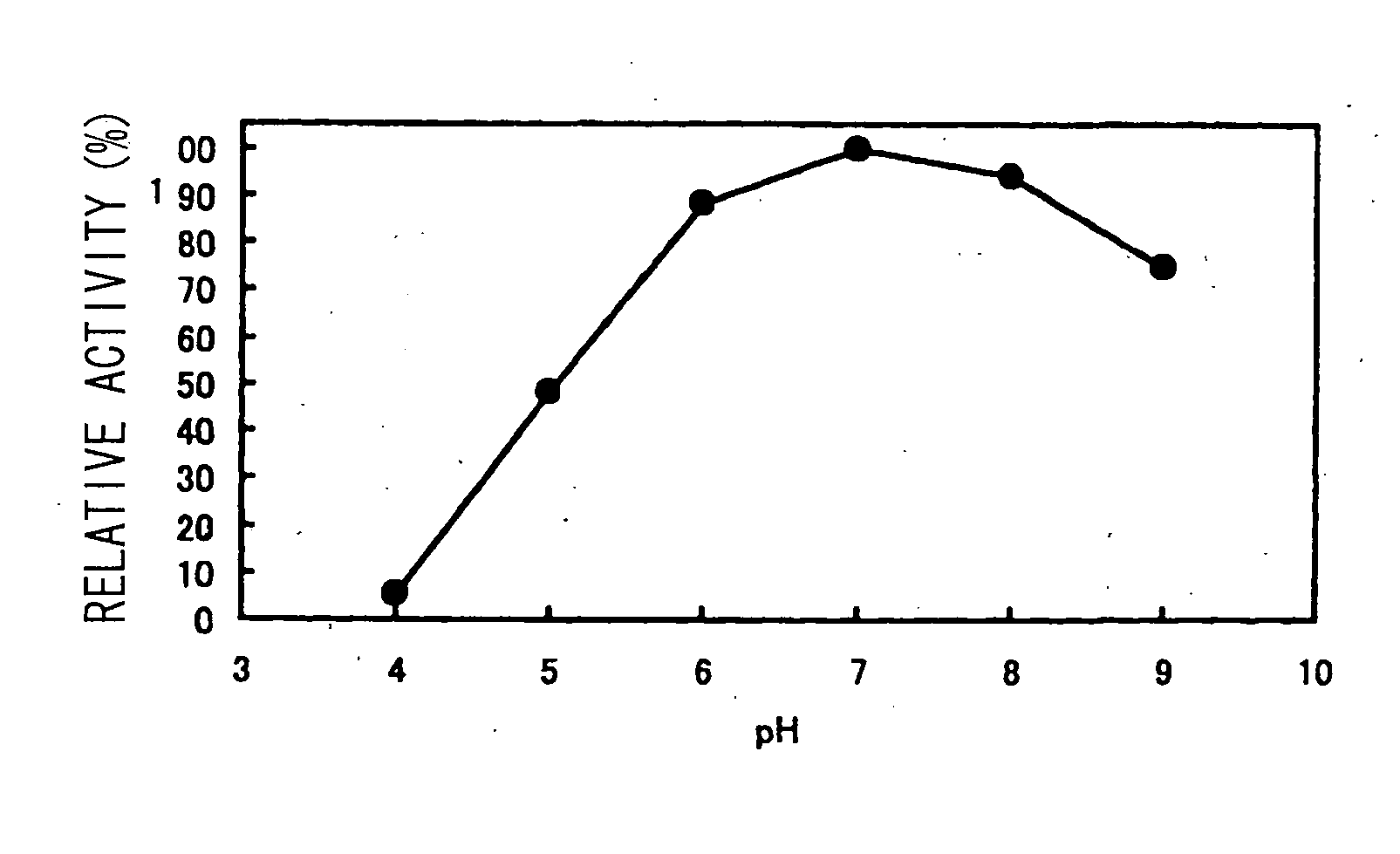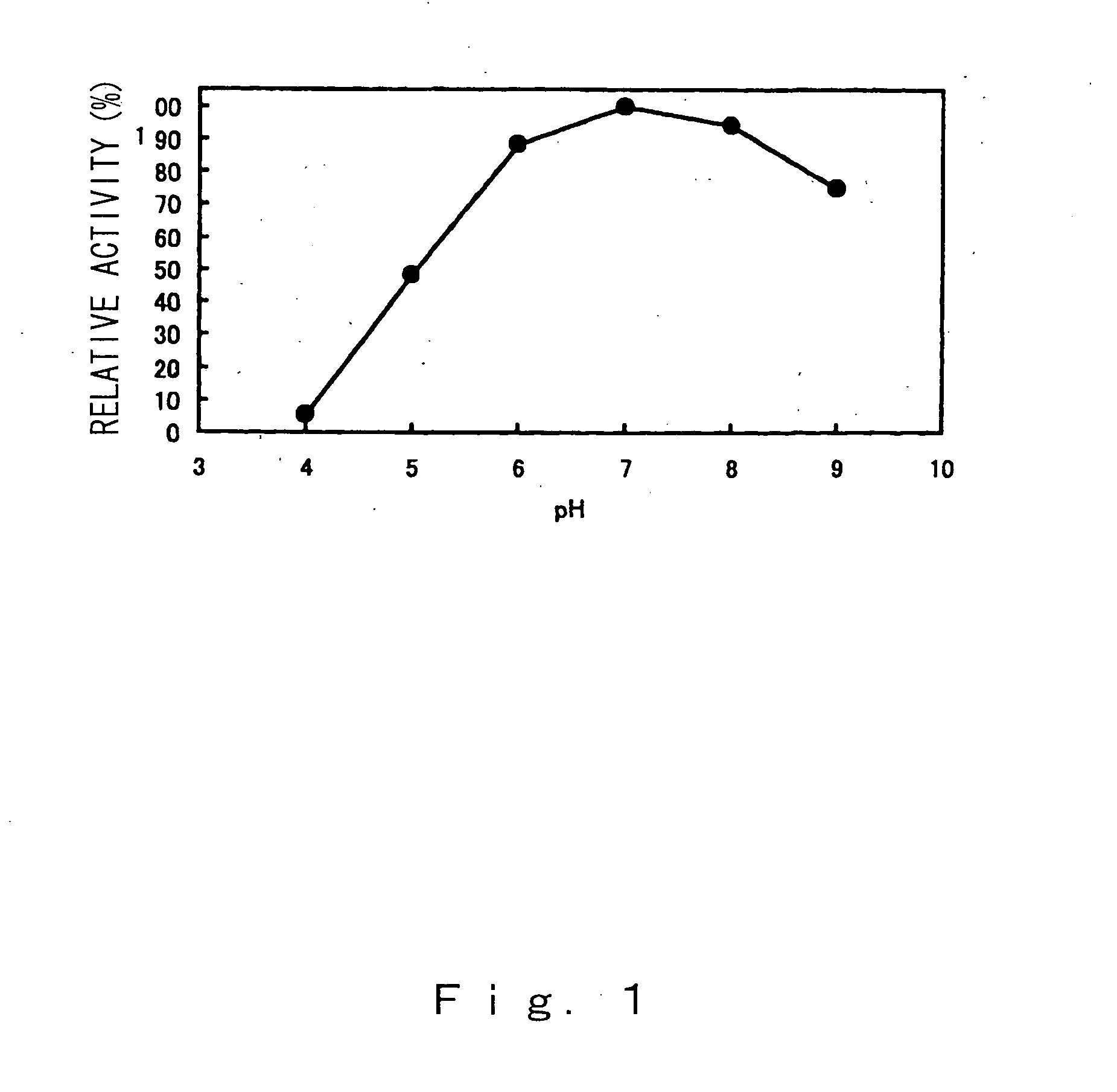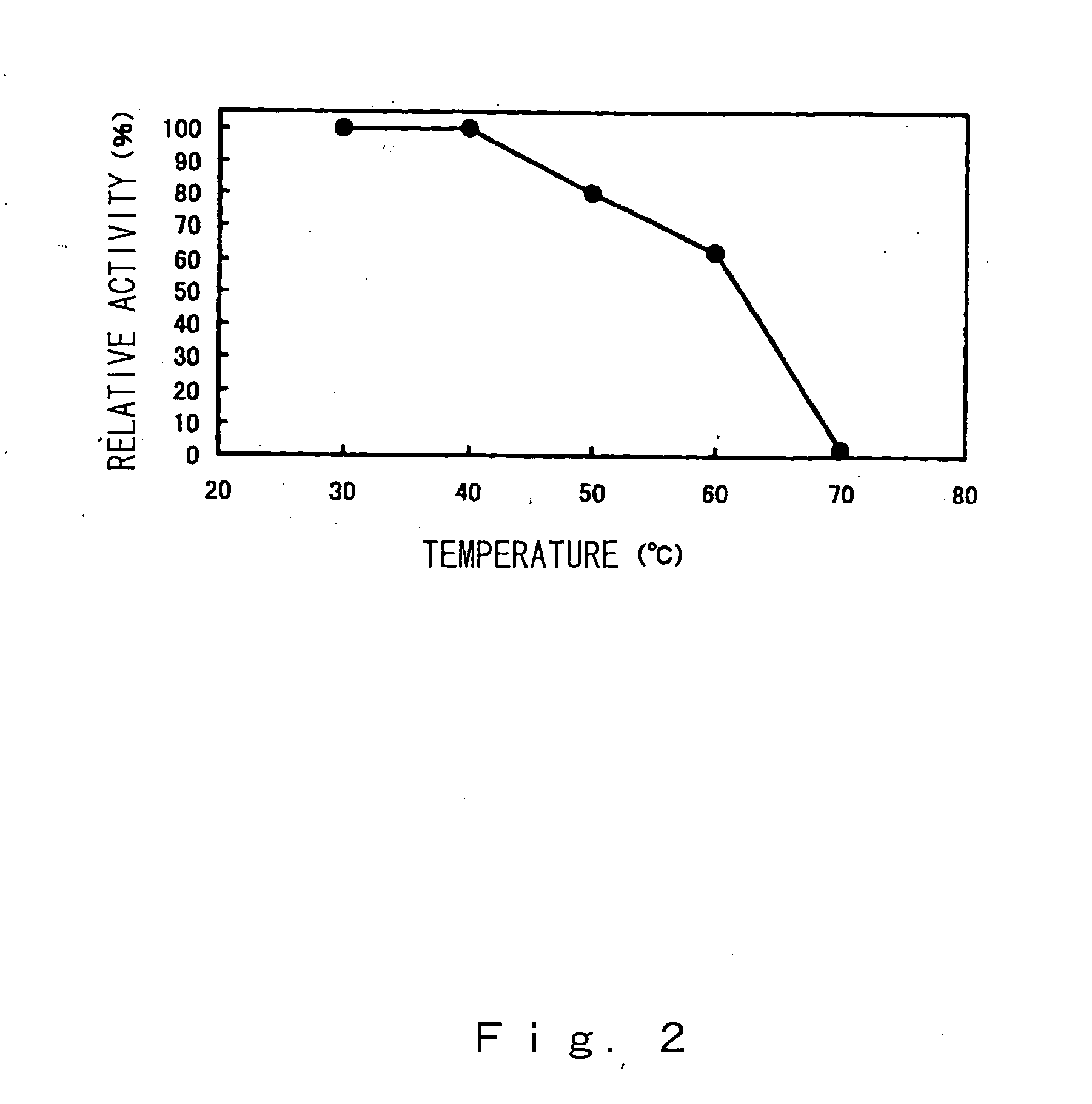Milk-coagulating enzyme originating in bacterium and process for producing cheese using the same
- Summary
- Abstract
- Description
- Claims
- Application Information
AI Technical Summary
Benefits of technology
Problems solved by technology
Method used
Image
Examples
example 1
[0040] The Paenibacillus sp. bacterial strain (FERM P-18138) was cultured at 37° C. until the end of the-log phase and 1:2 L of the culture solution was centrifuged to harvest the bacteria. The bacteria were resuspended in 600 mL 5 mM aqueous calcium chloride containing 0.5% soluble starch and cultured overnight. After culturing, the culture solution was centrifuged at 4° C. to obtain a crude enzyme solution. Aluminum sulfate was added to the crude enzyme solution to 50% saturation, the precipitate was removed by centrifugation, and aluminum sulfate was added to the supernatant obtained to 80% saturation. The precipitate was recovered by centrifugation and dialysis was performed overnight against 3.3 mM MES / 3.3 mM HEPES / 3.3 mM sodium acetate-5 mM calcium chloride (pH 5.5). The result was that a BSA standard of approximately 2.4 mg of enzyme preparation was obtained with a milk-coagulating activity of approximately 1,100,000 units.
example 2
[0041] The enzyme preparation obtained in Example 1 was loaded into a Poros HS 20 micron column (4.6 mm in diameter×100 mm in height) equilibrated with a buffer solution (buffer solution A) of 3.3 mM MES / 3.3 mM HEPES / 3.3 mM sodium acetate containing 5 mM calcium chloride (pH 5.5) and eluted under a linear gradient with buffer solution A containing 0-0.2 M salt to recover the active fraction. Aluminum sulfate was added to the active fraction to a final concentration of 1M and this was loaded into a Poros HP2 20 micron column (4.6 mm in diameter×100 mm in height) equilibrated with a buffer solution (buffer solution B) of 15 mM tris-hydroxymethyl aminomethane / 15 mM bis-tris propane containing 1M aluminum sulfate and 5 mM calcium chloride (pH 7.5) and eluted under a linear gradient with buffer solution B containing 1M-200 mM aluminum sulfate to recover the active fraction. Dialysis of the active fraction was performed against a buffer solution of 5 mM tris-hydroxymethyl aminomethane / 5 m...
example 3
(1) Cheese Production
[0042] The Paenibacillus sp. bacteria were spread onto agar in 100 Petri dishes 9 cm in diameter and propagated at 37° C., the milk-coagulating enzyme was extracted from the agar with water, and the bacteria and agar fragments were removed by centrifugation. After filtration, the milk-coagulating enzyme was suspended in skim milk to 0.5% w / v and freeze-dried to make a milk-coagulating enzyme preparation. Milk was heat sterilized for 30 minutes at 65° C., cooled to 30° C., and inoculated with 1% lactic-acid bacteria starter culture, to which was added this milk-coagulating enzyme preparation dissolved in a small amount of water. Thereafter, established methods were used for cutting, whey off, pressing, and salting, with 6 months ripening to produce Gouda cheese.
(2) Results
[0043] Table 1 shows the free amino acid contents for the cheese obtained from the above production process using the milk-coagulating enzyme in the present invention as rennet (present inv...
PUM
| Property | Measurement | Unit |
|---|---|---|
| temperature | aaaaa | aaaaa |
| molecular weight | aaaaa | aaaaa |
| pH | aaaaa | aaaaa |
Abstract
Description
Claims
Application Information
 Login to View More
Login to View More - R&D
- Intellectual Property
- Life Sciences
- Materials
- Tech Scout
- Unparalleled Data Quality
- Higher Quality Content
- 60% Fewer Hallucinations
Browse by: Latest US Patents, China's latest patents, Technical Efficacy Thesaurus, Application Domain, Technology Topic, Popular Technical Reports.
© 2025 PatSnap. All rights reserved.Legal|Privacy policy|Modern Slavery Act Transparency Statement|Sitemap|About US| Contact US: help@patsnap.com



